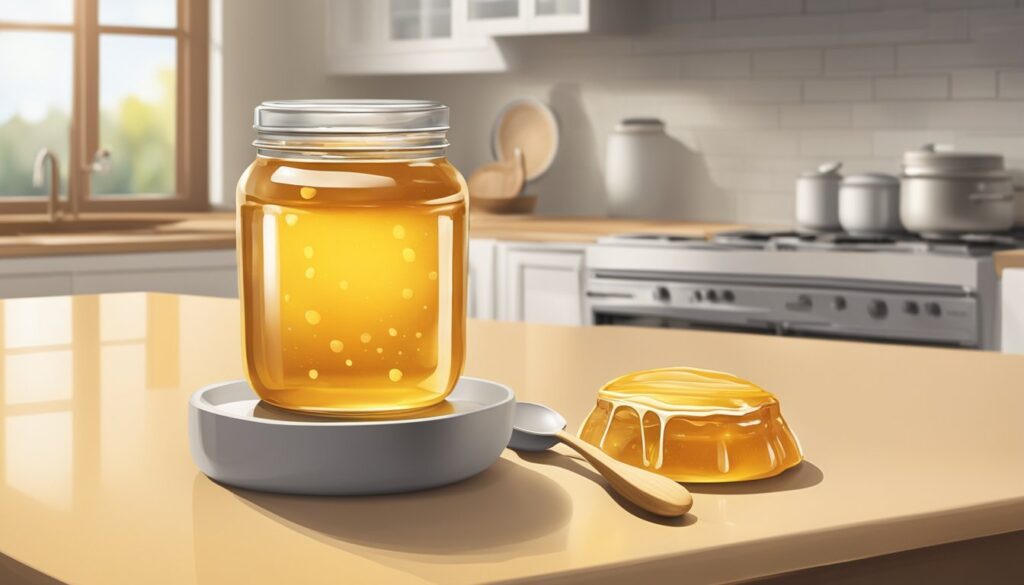Honey, known as “nature’s sweetener,” has been utilized in various cultures for centuries due to its unique flavor and health benefits. It contains carbohydrates, vitamins, minerals, and antioxidants, making it nutritionally superior to refined sugars. Various types, such as clove, clover, wildflower, and Manuka honey, offer distinct flavors for cooking and baking. Honey acts as a natural preservative, enhances dishes, and provides flavor complexity, making it versatile for marinades, glazes, and beverages. When substituting honey for sugar, use less and adjust liquid ingredients. Overall, honey enriches culinary experiences with its flavor, history, and health advantages.
The Sweet Science: Understanding Honey’s Role in Cooking and Baking
Honey, often referred to as "nature’s sweetener," has been used for thousands of years in various cultures around the world. Its unique flavor profile, along with its myriad health benefits, makes it an essential ingredient in both cooking and baking. In this article, we will delve into the many roles that honey plays in the culinary world, its nutritional value, and how it compares to other sweeteners.
The Elegance of Honey
Honey is a viscous liquid produced by bees from the nectar of flowers. It is not merely a sweetener; it is a complex blend of sugars, enzymes, vitamins, and minerals. This complexity contributes to its versatility in the kitchen.
Types of Honey
- Clove Honey: Dark and robust, with a strong flavor perfect for marinades and rich sauces.
- Clover Honey: Light and mild, ideal for sweetening tea or drizzling over pancakes.
- Wildflower Honey: Offers a varied flavor depending on the bloom season and is commonly used in baking.
- Manuka Honey: Known for its medicinal properties and distinct flavor, prized in both cooking and for health benefits.
Nutritional Value of Honey
Key Nutrients in Honey
Honey consists mainly of carbohydrates (about 82%), along with small amounts of vitamins and minerals. Below are some of the key components:
-
Natural Sugars: Approximately 70-80% of honey is glucose and fructose. These sugars are easier to metabolize than processed sugars and provide a quick source of energy.
-
Vitamins: Honey contains B vitamins such as B2 (riboflavin), B3 (niacin), B5 (pantothenic acid), and B6, which support metabolism and contribute to energy production.
-
Minerals: Including calcium, iron, magnesium, phosphorus, potassium, and zinc, these minerals support various bodily functions.
- Antioxidants: High-quality honey, especially darker varieties, is rich in antioxidants such as flavonoids and phenolic acids, which help combat free radicals and may reduce the risk of chronic diseases.
Honey vs. Other Sweeteners
While sugar provides empty calories, honey offers functional benefits:
-
Caloric Density: Honey is more calorically dense than sugar, which means you can use less of it to achieve the same level of sweetness.
-
Glycemic Index: Honey has a lower glycemic index than sugar, leading to a slower rise in blood sugar levels.
- Flavor Complexity: Honey’s unique flavor can enhance dishes in ways that plain sugar cannot.
Cooking Applications of Honey
Marinades and Dressings
Honey’s natural sweetness can balance acidity in dressings and marinades. A simple honey mustard dressing can elevate salads and roasted vegetables.
Recipe Idea: Honey Mustard Vinaigrette
- Ingredients: 1/4 cup honey, 1/4 cup Dijon mustard, 1/2 cup olive oil, 3 tablespoons apple cider vinegar.
- Instructions: Whisk ingredients together in a bowl. Drizzle over salads for a deliciously sweet and tangy flavor.
Glazing Meats
In cooking, honey acts as an excellent glaze for meats. Its sticky texture caramelizes when heated, creating a beautiful crust.
Recipe Idea: Honey Glazed Chicken
- Ingredients: 4 chicken thighs, 1/4 cup honey, 2 tablespoons soy sauce, garlic, and ginger.
- Instructions: Combine ingredients in a bowl, marinate chicken, and then bake at 375°F until golden brown.
Incorporating into Beverages
Honey can sweeten drinks while adding depth to flavors. It’s a natural choice for teas, lemonades, and cocktails.
Recipe Idea: Honey Lemonade
- Ingredients: 1/2 cup honey, 1 cup fresh lemon juice, 4 cups water.
- Instructions: Mix honey with lemon juice, add water, and stir well.
Baking with Honey
Natural Preservative
Honey’s natural acidity can act as a preservative, helping baked goods retain moisture longer, preventing them from drying out.
Substituting Sugar with Honey
When using honey instead of sugar in recipes, remember that honey is sweeter; thus, you can use less of it—typically about 1/2 to 2/3 cup of honey for every cup of sugar. Also, reduce other liquids in the recipe slightly, as honey is a liquid.
Recipe Idea: Honey Banana Bread
- Ingredients: 3 ripe bananas, 1/2 cup honey, 2 eggs, 1/3 cup melted butter, 1 teaspoon baking soda, pinch of salt, 1 1/2 cups all-purpose flour.
- Instructions: Preheat oven to 350°F. Mix the wet ingredients, then combine with dry ingredients. Pour into a greased loaf pan and bake for about 50 minutes.
Honey in Cookies and Cakes
Honey adds moisture and flavor to cookies and cakes. Its natural syrupy flavor can replace granulated sugar, providing a sophisticated edge to traditional recipes.
Tips for Baking with Honey:
- Adjust the baking temperature down by 25°F to prevent over-browning.
- For every cup of honey used, reduce other liquid ingredients by 1/4 cup.
Conclusion
Understanding honey’s multifaceted role in cooking and baking expands the range of culinary possibilities. With its rich history, nutritional benefits, and adaptability, honey stands out as an ingredient that not only enhances flavor but also nourishes. Whether you’re glazing meats, baking bread, or sweetening beverages, honey’s unique characteristics make it an invaluable addition to your kitchen. Embrace ‘The Sweet Science’ of honey in your culinary adventures today!
